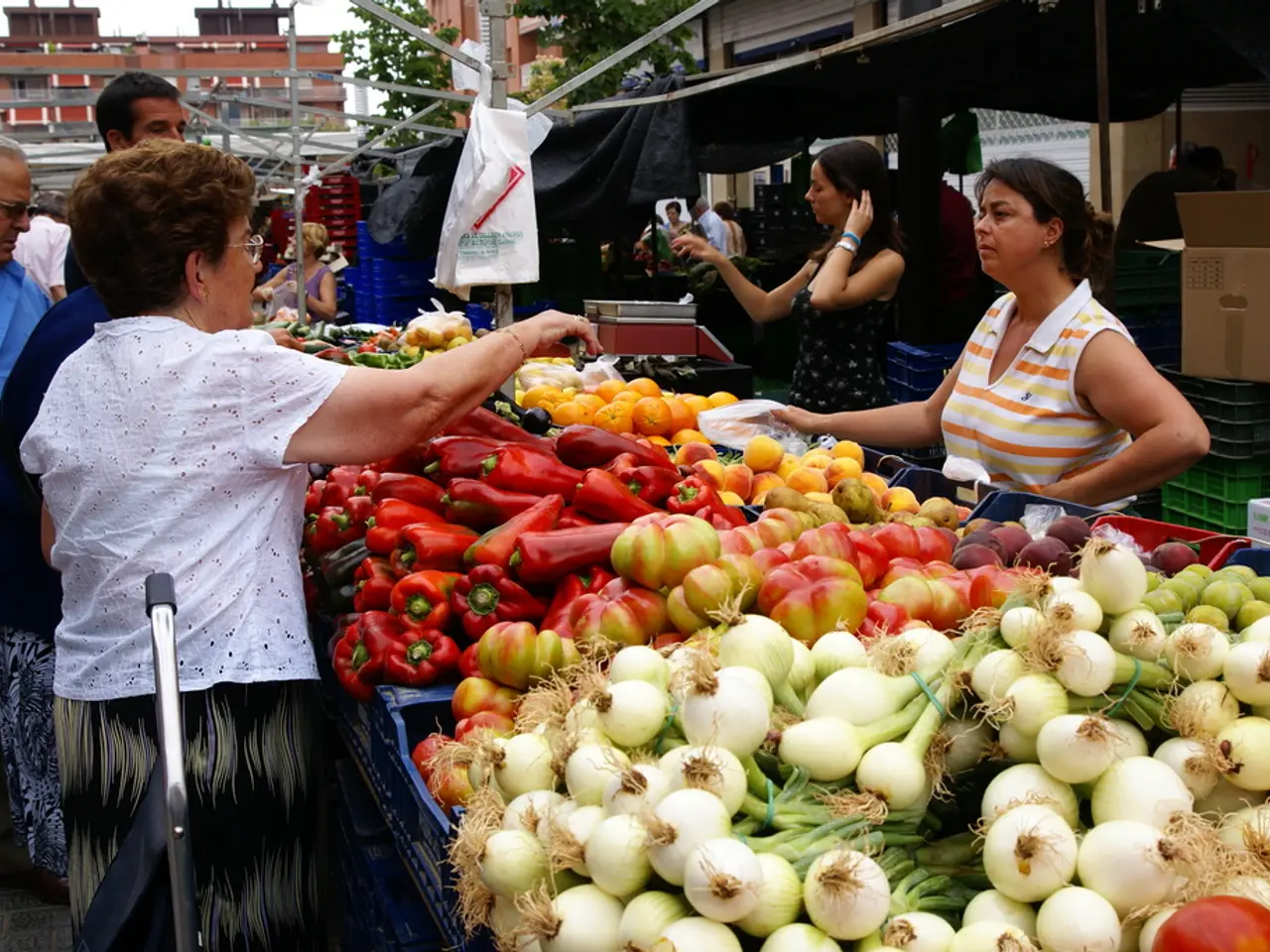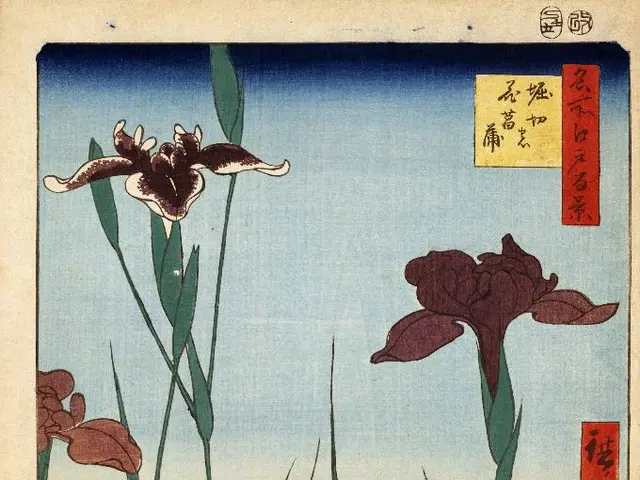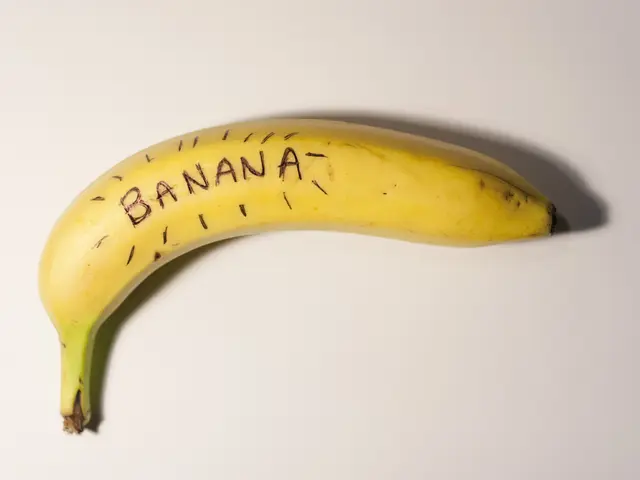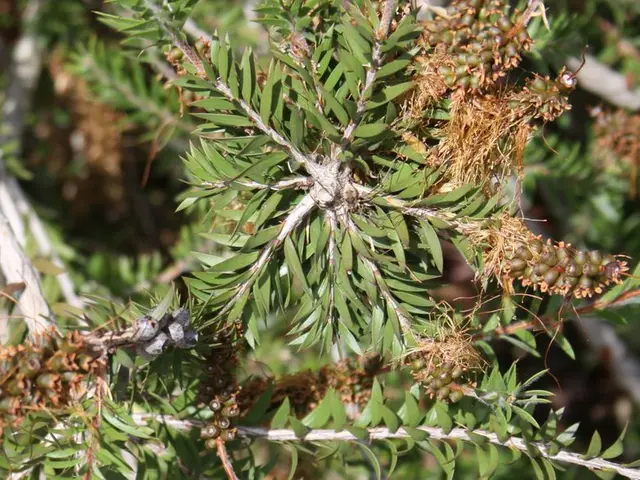Steer Clear of Five Plastic Items in Your Garden and Discover Strategies for Lowering Plastic Consumption
In the pursuit of a greener planet, gardeners are increasingly turning to sustainable alternatives to traditional plastic pots and planters. These eco-friendly options not only reduce plastic waste but also maintain functionality and style.
Landscape fabric, a longer-lasting alternative to black plastic weed barriers, is gaining popularity. This fabric can be easily cut to size and holes can be made for planting, making it a practical choice for gardeners. At the end of the season, it can be lifted up and rolled up for storage. However, it's important to ensure these upcycled materials have not been treated with toxic chemicals.
Biodegradable pots made from composted materials, such as CowPots and RootMaker’s BioPot, are another sustainable option. Made from composted cow manure and biodegradable cardboard respectively, these pots naturally decompose in the soil, improving water retention and reducing root rot.
Proven Winners’ Eco+ containers, made from PLA (polylactic acid), a biopolymer derived from natural sugars in corn and sugar beets, are industrially compostable and degrade much faster than traditional plastics.
Natural and recycled materials like wood, ceramic, stoneware, fiber cement, terracotta clay, bamboo fibers, and recycled plastics are also widely available. Etsy offers handmade pots crafted from sustainable materials such as wood, renewable bioplastics, and ceramic, supporting small artisans while minimizing environmental impact. Bamboo fiber planters are durable, UV stabilized, moisture resistant, and suitable for outdoor use.
Creative gardening with recycled materials includes using old tin cans, teapots, mugs, shoes, or boots as rustic planters. This approach reduces waste and adds unique aesthetic value to gardens.
Furthermore, sustainable choices extend to gardening tools. Wood and metal tools are more durable than plastic ones and last longer. Twine is a sturdy, reusable, and inexpensive alternative to plastic plant ties.
Garden upcycling can be a cost-effective way to replace plastic planters by using old barrels, metal tubs, or cast-off materials. By embracing these sustainable alternatives, gardeners can contribute to reducing plastic pollution and support circular, low-impact gardening practices.
In some garden centres, the option of refilling bags for things like potting soil and compost is available, further reducing waste and promoting a more sustainable approach to gardening. It's a small step towards a greener future, one pot at a time.
[1] RootMaker, Inc. (n.d.). BioPot. Retrieved from https://www.rootmaker.com/products/biopot [2] Etsy (n.d.). Garden Pots. Retrieved from https://www.etsy.com/uk/search?q=garden+pots [3] The Spruce (n.d.). 15 Unusual Planters Made from Recycled Materials. Retrieved from https://www.thespruce.com/upcycled-planters-1412393 [4] Proven Winners (n.d.). Eco+ Containers. Retrieved from https://www.provenwinners.com/eco-containers-2/ [5] Bamboo Fiber Planters (n.d.). Retrieved from https://www.bamboofiberplanters.com/
Home-and-garden enthusiasts can explore sustainable living by choosing eco-friendly options for gardening, such as biodegradable pots made from composted materials like CowPots or RootMaker’s BioPot, or Proven Winners’ Eco+ containers made from PLA. Natural and recycled materials like wood, Ceramic, stoneware, fiber cement, terracotta clay, bamboo fibers, and recycled plastics are also available for gardening pots, with various options on platforms like Etsy. Sustainable gardening extends to household items, with creative reuse of old tin cans, teapots, mugs, shoes, or boots as rustic planters, and durable, UV-stabilized bamboo fiber planters for outdoor use.








